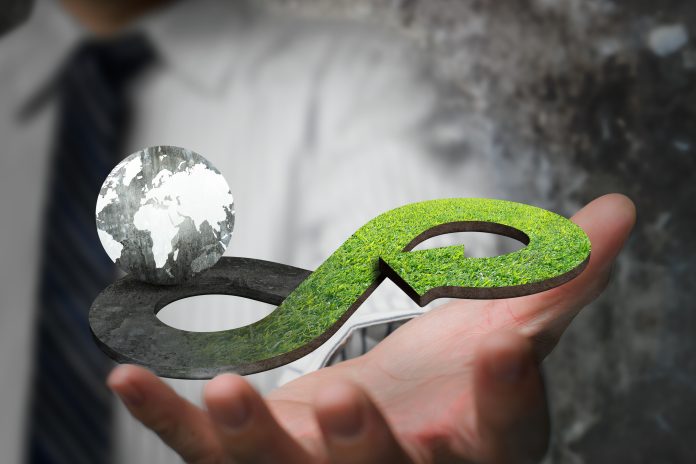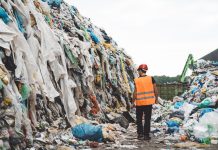Virginijus Sinkevičius, European Commissioner for Environment, Oceans and Fisheries, explains the new Circular Economy Action Plan and argues that the green and digital transition can bring more resilience and sustainable jobs for the EU
The pandemic has exposed and exacerbated vulnerabilities in our globalised and interconnected world. It has disturbed supply chains, wiped out jobs, and tested the response capacity of businesses and whole countries to the limit.
Its effects will be profound and long-lasting. But even before the pandemic, we were already faced with accelerating crises on the climate, biodiversity and resource fronts, and few would wish to return to the “old normal”.
Now is the time to take the opportunity to sketch out a “new normal”, where sustainability and resilience become the hallmark of the European Union. The EU Recovery Plan addresses this challenge, with a historic budget to power a job-rich recovery built around green and digital solutions.
The new Circular Economy Action Plan
One central element in this recovery will be a swifter transition to a circular economy, where economic growth and prosperity are decoupled from resource use and environmental impacts. Adopted in March this year, the new Circular Economy Action Plan will guide Europe along this path. It is equipping our economy for the future with measures to prolong the life cycle of products, and ensuring that resources used in the EU are optimised and kept in the economy for as long as possible. In extracting more value and functionality from products and materials, the circular economy creates local jobs at all skill levels and provides opportunities for social and territorial integration and cohesion. Furthermore, new business models bring indirect employment, thus bringing value across the economy as a whole.
Today, only 12% of materials in our products and buildings are secondary rather than virgin. This is causing a dual problem: one – we need to continue finding more and more material, and second – the extracting of this material, as well as the waste products left behind are harming our environment. Too many products break too quickly, are impossible to reuse or repair, or are actually designed just to be used once, and many are difficult or unviable to recycle. How many of us have wished for that their smartphone or other personal electronic device lasted for longer? How many of us have wished for that the one single charger fits for all smart devices?
The new Action Plan aims to transform the way products are made, with a view to ensuring that sustainable products and services become the norm. And it sets out to ensure that consumers are not only better informed, but have increased rights to get products repaired.
The goal is to take circularity to the mainstream, tackling problems at source. This implies re-thinking how the economy meets the needs of our citizens in different sectors, particularly in high-impact areas like electronics, buildings, textiles and packaging. A new range of repair services, product-as-service models and digital solutions are expected to bring a better quality of life, innovative jobs and upgraded knowledge and skills.
With that in mind, the Circular Economy Action Plan foresees actions to make business more resilient. For example, when a company provides its products as a service, reuses or remanufactures them or incorporates recycled materials, it reduces its dependency on unpredictable supplies, while simultaneously lowering its structural costs. Public authorities that opt for circular products and services support the market for such innovative companies in their local cities, regions and countries. Digitally based technologies can also increase resilience, with 3D printing providing customised and locally delivered solutions and responding to urgent needs.
Circular economy: Textiles and other sectors
The circular economy brings benefits to numerous sectors. Textiles, for instance, are facing major disruption because of COVID-19, with shop-based purchases falling because of confinement measures and e-commerce unable to fill the gap. The international trade in second-hand textile products has been badly affected as well. The strategy announced in the Action Plan will set conditions to help the sector emerge from the crisis more resilient and more sustainable.
The remanufacturing sector alone has the potential to generate nearly 600,000 jobs by 2030, particularly in things such as automotive components and medical equipment.
When those products do eventually become waste, better management of that waste results in more jobs. One landmark study used by the recycling industry shows that for every 10,000 tonnes of waste products and materials, one job can be expected to be created if these are incinerated, six jobs if they are landfilled, 36 jobs if they are recycled, and nearly 300 if they are refurbished and re-used.
Greater sustainability: The European Green Deal
When your house burns down, you build it back better and more efficient. This is why in these times of hardship, our action must be geared towards those most in need, and to creating the sustainable wellbeing of the future. With Next Generation EU, Europe has a recovery plan for an economy that is more resilient, better equipped to deal with digital challenges, and above all, greener. In the wake of this crisis, Europeans will demand greater sustainability. And that’s the thinking at the heart of the European Green Deal.











